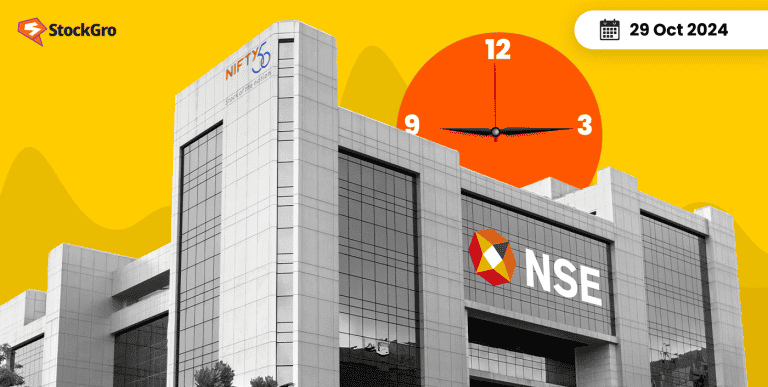
Smart investing is crucial for millennials aiming to secure their financial future. However, investment mistakes are all too common and can significantly hinder economic growth. Those born between 1981 and 1996 fall under the millennial generation, making them around 28 to 43 years old in 2024.
Understanding and avoiding these common investing mistakes is essential for building wealth and achieving long-term financial goals. This article will highlight five key investment mistakes millennials should learn from and provide actionable tips on how to avoid these beginner trader mistakes.
#1 Overlooking diversification
Diversification is the spreading of your money among several kinds of assets—stocks, bonds, real estate—to reduce your risk. Not depending simply on one type of investment will enable you to protect your portfolio from the poor performance of any one asset.
Often emphasising high-risk choices like stocks or cryptocurrencies, many millennials limit their investing to one asset type. These assets are highly volatile, hence portfolios are subject to changes in the market even if they might show great gains.
For instance, Bitcoin lost more than 60% of its value in 2022, therefore ruining investors who had mostly depended on cryptocurrencies without spreading into other asset classes. The crash had less effect on those who had distributed their money across more steady choices like bonds or real estate.
To create a more balanced and solid portfolio and prevent this mistake, vary your investments across multiple asset classes—stocks, bonds, mutual funds, gold, etc.
Must read: Diversification: Why it is important for your portfolio
#2 Ignoring the power of compounding
Compounding is the process whereby the returns on an investment create their returns over time. Particularly if investments are started early, this exponential gain can greatly raise wealth.
Many millennials mistakenly believe they have lots of time to begin investing, which delays activities that could result in large returns. Their investing path being postponed means they lose years of possible compounding gains.
For example, if someone invests ₹5,000 monthly starting at age 25 and gets an annual return of 12%, by age 60 they might have around ₹2.1 crore. If they start at age 35, on the other hand, they would have to invest ₹9,500 monthly to attain the same level by age 60. This clear disparity emphasises the exponential increase early investing offers.
Starting little investments early on can help you to fully benefit from compounding. An outstanding approach to investing regularly and leveraging compounding over time is via systematic investment plans (SIPs).
#3 Letting your emotions rule
Emotional investment is the result of decisions motivated more by panic, fear, or greed than by logical analysis. This can cause impulsive behaviour undermining long-term financial objectives.
Some common behavioural biases and what to do about it:
- Unrealistic expectations: Guaranteeing reasonable expectations for financial gains
- Loss aversion: Deciding suitable risk thresholds and the “highest acceptable loss”
- Familiarity bias: Working to lower “home country bias” and excessive dependence on the known
- Anchoring: Steering clear of too focused attention on a single reference point like a stock index.
- Overconfidence: Learning to value the boundaries of one’s knowledge or investing approach
Assume a millennial called Riya who bought a tech stock that dropped 30% during a market correction. Fear paralysing her, Riya sells her shares to stop more losses. For investors that stayed on, though, the stock recovers during the following months and yields considerable increases. Riya’s emotional response shows how emotional decisions can negatively affect investment returns through a missed chance for recovery and development.
Using a disciplined investment approach—that is, one with well-defined objectives and use of stop-loss orders—you can fight emotional investing. Maintaining emotional equilibrium in investment decisions also depends on mindfulness practices and emphasising long-term goals over transient market swings.
You may also like: How do you stop making emotional money mistakes and invest smarter?
#4 Failing to understand risk tolerance
An investor’s capacity and will to bear changes in the value of their assets is known as their risk tolerance. To guarantee a comfortable investment experience, risk tolerance must be matched with financial goals and personal situations.
Would you want, for instance, a 40% chance to gain ₹1,00,000 in the stock market or a fixed deposit today for ₹50,000?
Should you lean towards the fixed deposit, this could suggest a reduced risk tolerance since you value the certainty of a guaranteed return above the prospect of a bigger payoff but with associated dangers.
On the other hand, if you decide on the stock market possibility, this indicates a larger risk tolerance since you are ready to gamble on the possibility of bigger returns even though there is a great chance you could find nothing.
You should do a thorough risk analysis to ascertain your degree of comfort with changes in the market to handle this problem. Based on your financial goals and risk tolerance, this assessment can help you design a diversified investment portfolio that balances risk and return.
Also read: Risk tolerance: Defining your personal investment strategy and portfolio.
#5 Neglecting emergency funds and liquid assets
Acting as a financial safety net, an emergency fund gives quick access to liquid assets to pay for unanticipated costs including job loss or medical events. Maintaining financial stability depends on this fund, which lets people negotiate crises without compromising long-term investment plans.
Many millennials invest their savings in long-term assets without building enough emergency money. During financial crises, this control might result in forced withdrawals from assets, thus causing losses and upsetting the equilibrium of growth.
For instance, numbers show that 44% of Indian millennials said they borrowed more during the COVID-19 pandemic. Many millennials also found it quite difficult to control daily costs, which emphasises the need to have easily available money. Those without emergency savings had to make tough decisions including selling off investments at a loss.
Before emphasising long-term investments, try to save an emergency fund equal to three to six months’ worth of living expenses to avoid such situations. This proactive approach guarantees that you will be ready for unanticipated difficulties and allows investments to flourish without stopping.
Bottomline
Millennials aiming for financial stability must first understand and avoid typical investment blunders. Millennials may set a strong basis for their financial futures by realising the value of diversification, using compounding, controlling emotional reactions, understanding risk tolerance, and keeping enough emergency reserves.
These techniques not only help to reduce possible risks but also enable people to make wise decisions consistent with their long-term objectives.
Remember that discipline and patience are most important when you start your investing path. Through the use of these techniques, you will be able to confidently negotiate the complexity of investing, creating a wealthier and more secure future for yourself.
FAQs
What do millennials value most?
Millennials appreciate investments in line with their own values, including those related to social, environmental, and governance (ESG) factors. Usually favouring growth stocks and socially conscious investments, they give long-term gains and stability a top priority. Reflecting their tech-savvy character and search for ethical investment opportunities, they also expect digital accessibility and openness from their investment platforms.
What is a common investment mistake?
Ignoring the diversification of your portfolio is a typical investment error. If one asset or industry underperforms, depending too much on that one could expose you to major danger. Diversification helps distribute risk among several assets, thus lessening the effect of any one investment’s bad performance. Maintaining a strong and balanced portfolio calls for this approach.
What is the most difficult part of investing?
Keeping discipline and controlling emotions are the toughest aspects of investing. Fear and greed brought on by market volatility might drive irrational choices straying from a well-considered plan. Maintaining a long-term strategy in the face of transient changes calls for both endurance and patience. A constant success with investments depends on this emotional discipline.
What is the biggest barrier to investing?
The main obstacle to investing is ignorance about money matters. The complexity of investment possibilities overwhelms many people, and they worry about making mistakes. Their lack of confidence can keep them from starting. Furthermore deterring new investors are worries about market volatility and possible losses. Seeking professional counsel and raising financial knowledge will help one break through these obstacles.
Which investment is the riskiest?
Given their great volatility and lack of control, cryptocurrency investments are sometimes regarded as the riskiest. Within a short time, prices might vary greatly and cause major possible losses. Speculation stocks, options trading, and leveraged ETFs—which can boost returns but also carry significant risk—are other high-risk investments. Before making these investments, investors should evaluate their risk tolerance and do an extensive investigation.

